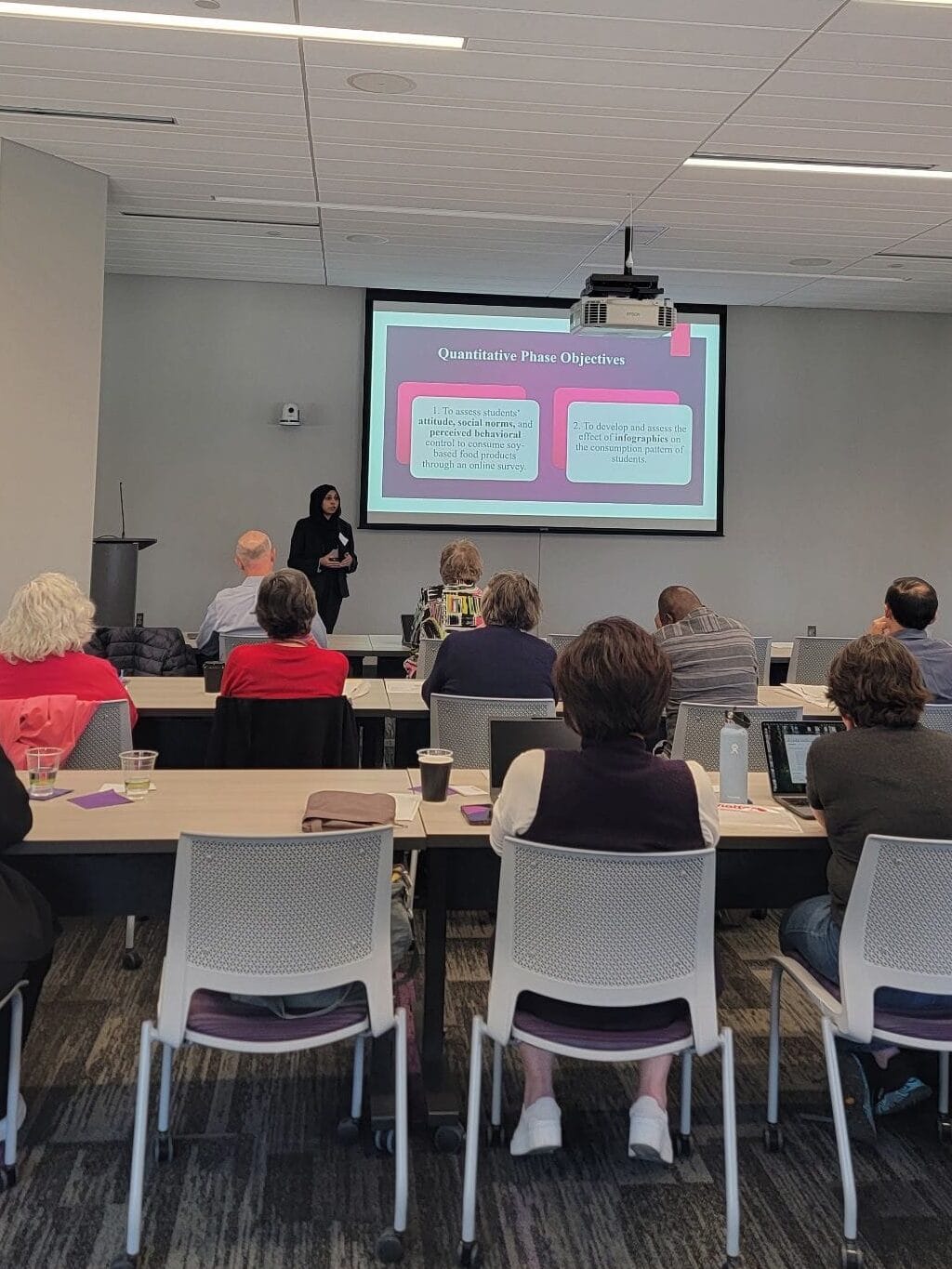Today, I experienced a defining moment in my academic and professional life—I presented my complete academic research for the first time at the FSMEC (Foodservice Systems Management Educational Council) Conference. While I’ve had the opportunity to share my work through posters at a couple of conferences before, this was the first time I stood before an audience and walked them through the full story of my research. It was exciting, nerve-racking, and incredibly rewarding all at once.
Table of Contents
A Mix of Nerves and Confidence

Heading into the session, I carried a bundle of emotions. I was definitely a little tense—would I remember everything I wanted to say? Would the audience engage with the material? But underneath those jitters, I felt confident. I knew my research inside and out. I had spent countless hours working on it, and today was the moment to finally share it in full.
I kept reminding myself that I wasn’t just presenting slides—I was telling a story I had lived, a process I had built from the ground up. That reminder helped steady my nerves as I took the stage.
The Academic Research: A Holistic Approach to Sustainable Soy
My presentation was titled “Integrating Sustainable Soy-Based Food Products at University Dining Centers: Through Consumer Insights, EMy presentation was titled “Integrating Sustainable Soy-Based Food Products at University Dining Centers: Through Consumer Insights, Educational Strategies, and Food Product Development.”
This work brought together three key pillars:
- Consumer insights to understand student perceptions and preferences around soy-based foods.
- Educational strategies to increase awareness of plant-based and sustainable options.
- Food product development to create real soy-based menu items that could be introduced at university dining centers.
One of the most heartwarming moments was when someone from the audience commented that I did a “very great job” by tying together all three components. They said it was impressive because, usually, student researchers focus on just one part—either the qualitative side, the quantitative data, or the product development. But doing all three gave a complete picture and brought true value to the research.
The Presentation: From Paper to People
Presenting the full scope of my academic research—not just in fragments but as a full narrative—was a whole new experience. I felt like I was finally able to show the big picture: the “why,” the “how,” and the “so what.”
The audience was engaged, asking thoughtful questions that opened the door to deeper discussions. One moment that stood out to me was when someone asked about the feasibility of large-scale adoption of soy-based foods in dining halls—a question that pushed me to reflect on practical implementation beyond theory.
This kind of interaction isn’t always possible during a poster session. Having the time and space to take people through the full arc of the research was incredibly rewarding.
Questions That Made Me Reflect
The questions I received after the presentation were just as impactful as the presentation itself. Several attendees were curious about how I managed the transition from small-scale cooking—either at home or in a lab—to thinking about scaling up food production for large dining center facilities. It sparked a great conversation about feasibility, equipment limitations, and how sensory qualities might shift during scale-up.
These questions made me think deeply and helped me view my work from different perspectives. And honestly, they gave me a boost. By the time I was done with the Q&A, I felt like a more confident version of myself than I was when I stepped up to the podium.
Reflections and Takeaways
One of the biggest lessons I learned today: your voice matters—especially when you’re passionate about the topic. I realized that presenting isn’t just about delivering facts; it’s about connecting, sparking curiosity, and showing people what you care about.
I also realized how important these conferences are—not just for presenting, but for listening and learning. I got to meet scholars working on cutting-edge projects, attend sessions that challenged my thinking, and walk away with a fresh batch of ideas for future work.
This experience also reminded me that sustainability in food systems isn’t just a research trend—it’s a movement, and education plays a key role in driving it forward. Being able to contribute to that conversation, even in a small way, felt meaningful.
Looking Ahead
Today was a big step. Presenting at FSMEC gave me a taste of what it means to step into the academic arena, to share knowledge in a way that’s engaging, accessible, and meaningful. I’m walking away from this conference feeling more inspired and more prepared for what lies ahead. I know there will be more presentations, more research, and more opportunities to share and grow. But this one—my first full presentation at FSMEC—will always be special.
So if you’re ever second-guessing whether you’re ready to present your work—just go for it. You never know how much confidence and clarity it can give you until you do it.
If you want to learn more about the crucial role of healthy eating in preventing chronic conditions, check out our blog, “The Importance of Healthy Eating: A Comprehensive Guide.” It provides valuable insights into how balanced food choices can promote long-term health and well-being, which is especially important for individuals recovering from or at risk of eating disorders.
HealthyBiteLab
